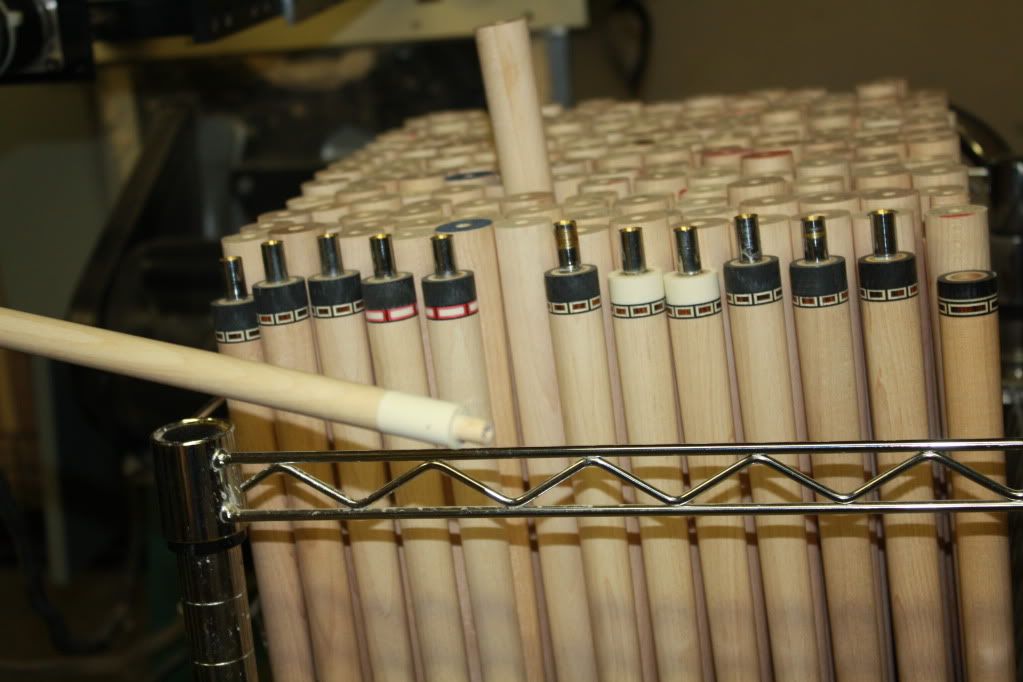I get the impression he was working that way so as to not block the camera.
My thought also, but whatever the reason, it is still better to play safe as always. I cant imagine if the accident happens.
I get the impression he was working that way so as to not block the camera.
Running backwards seems like a lot of hassle for no gain. Wonder if he knows he's doing it? The idea of having the lathe in forward with bit centered below the work is so that you can visually inspect the work as it's being done. I'm not crazy about the amount of glue. I would think with no glue on the shoulder, it will quickly get a blue chalk line around the ferrule that can never be cleaned without another ferrule change. Weird way of doing the job, but I suppose it will hold just fine.
I get the impression he was working that way so as to not block the camera.
Not sure of the lathe type, but looks like he's done some nice mods to his with the DRO on the cross-slide and tailstock- not to mention the tachometer and variable speed control.
I doubt he works like that all the time; it looks like he just did it because of camera placement. He needs one of those "safety guards removed for illustrative purposes only" type disclaimers!
Yes, I should have pointed out the long sleeves as a big no no. I have seem many lathe videos where they are positioned like him for viewing purposes. His technique overall isn't anything I would follow but semi-interesting nontheless.Craig,
You may be right but would you set up for a video to be advertised on the internet of yourself running rotating equipment with long sleeves reaching over a chuck.
This is something that needs to be pointed out as there are many newcomers here all the time and this action screams for "peer check and review" so just maybe someone thinks about it and realizes they have been developing a bad fundamental safety habit and has been getting away with it. If they understand the "root cause" of their bad habit and the potential consequences, they can make "corrective actions" before there has been a bad "lesson learned".
If this thread stops one person from an injury that would make my decade.
Rick G
Craig brought up the wet sanding might swell the wood.
Coat the wood with CA ?
He already has the Kress router mounted, why not have small buffer ?
Cutting away from the chuck might be more stressful to the ferrule as pointed out .
I actually like to cut the ferrule down on the taper machine if possible ( some shafts are just too wobbly to spin between centers ) as the 3-wing router bit cuts so clean.
I don't think he uses the micrometer while standing behind the chuck either.
Definitely done for the camera and he couldn't care less for the safety brigade b/c I don't think he's showing for peeps to follow his lead . He's not in lawsuit land. He's in Europe.
Now, we should end the safety sermon and self-promotion and maybe discuss better ways.
Craig brought up the wet sanding might swell the wood.
Coat the wood with CA ?
He already has the Kress router mounted, why not have small buffer ?
Cutting away from the chuck might be more stressful to the ferrule as pointed out .
I actually like to cut the ferrule down on the taper machine if possible ( some shafts are just too wobbly to spin between centers ) as the 3-wing router bit cuts so clean.

All good discussion but no one has mentioned the gorilla glue......
Kim
All good discussion but no one has mentioned the gorilla glue......
Kim
All good discussion but no one has mentioned the gorilla glue......
Kim